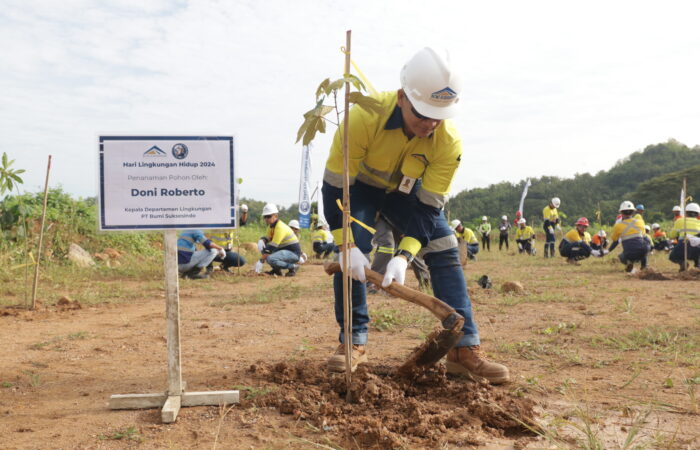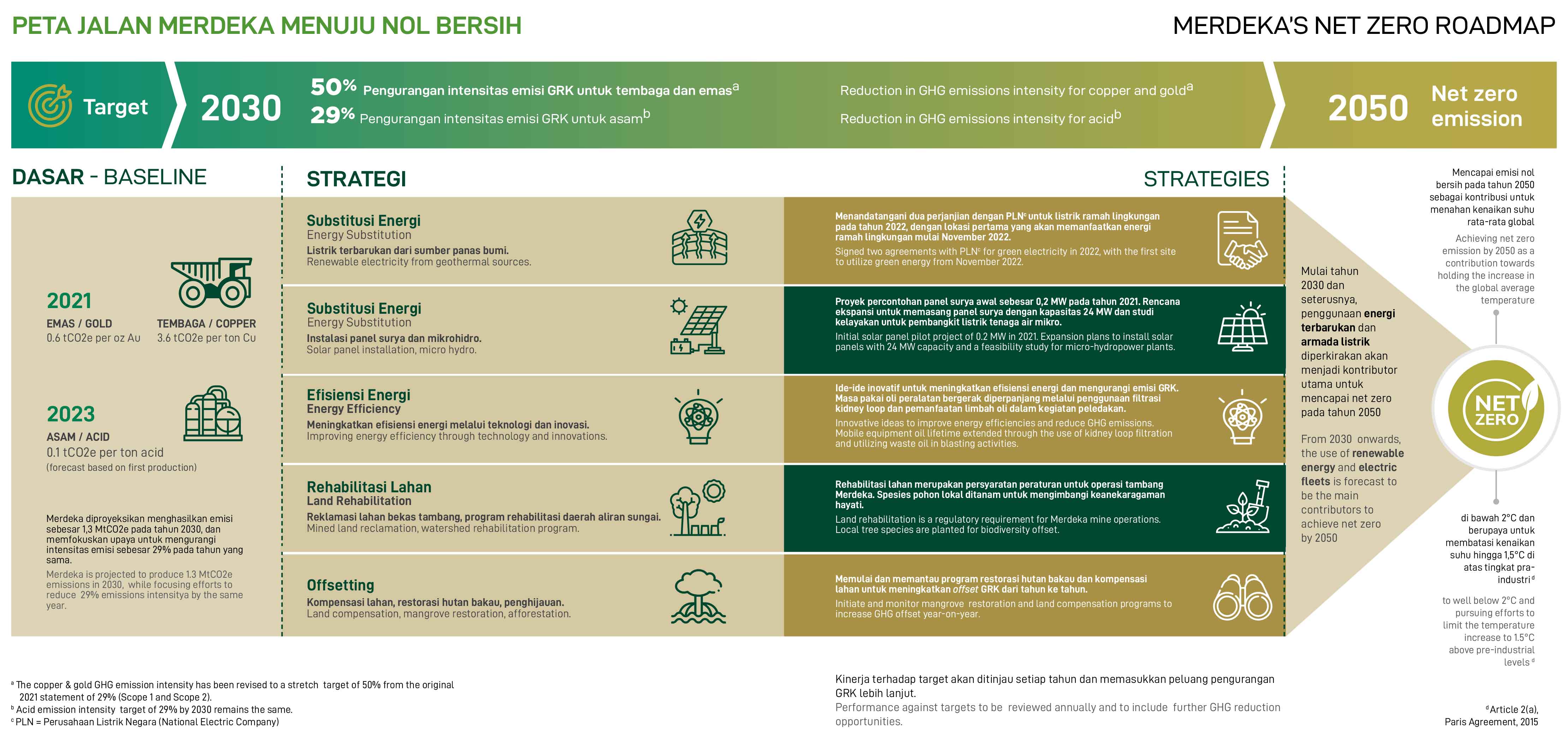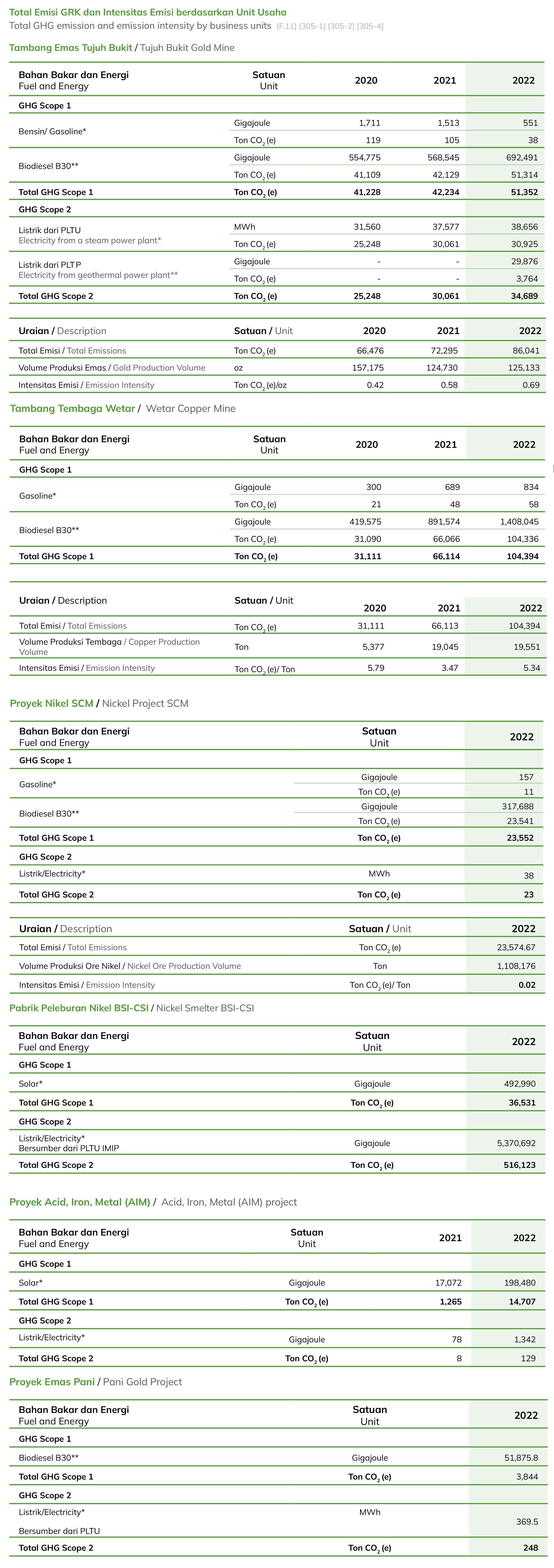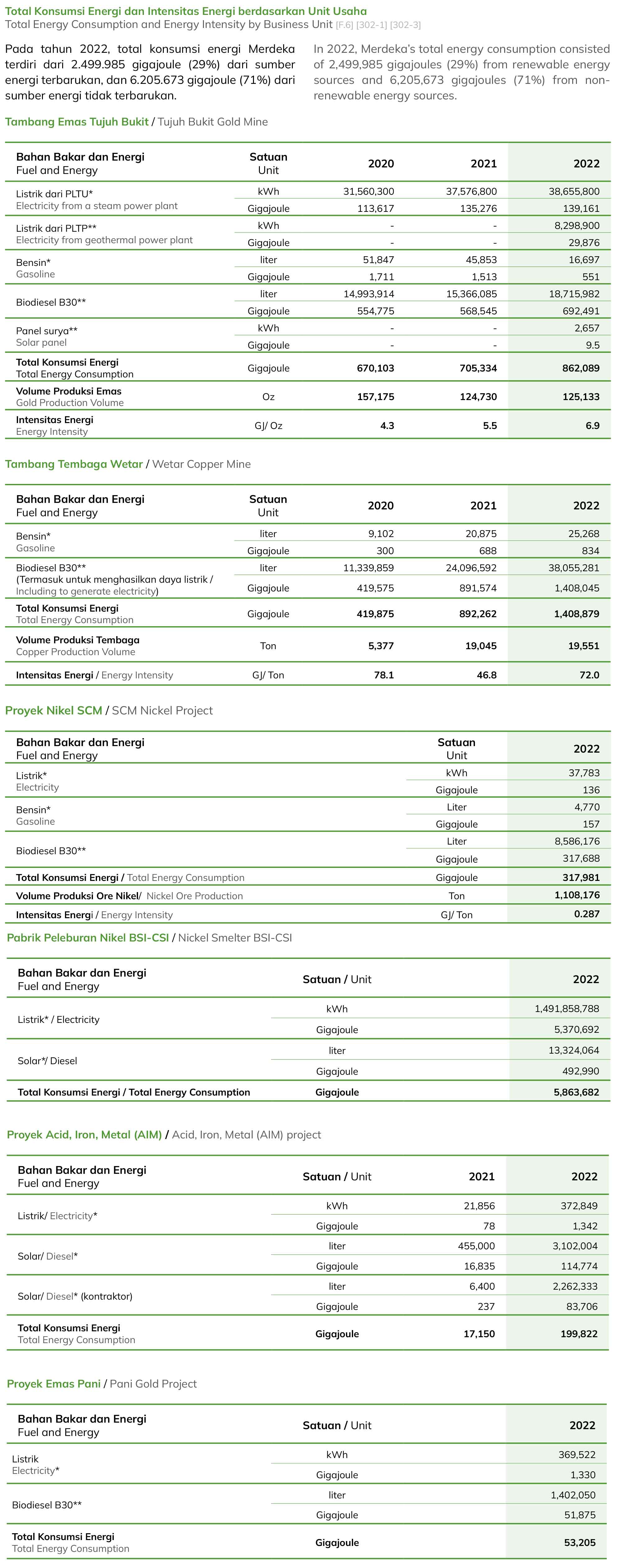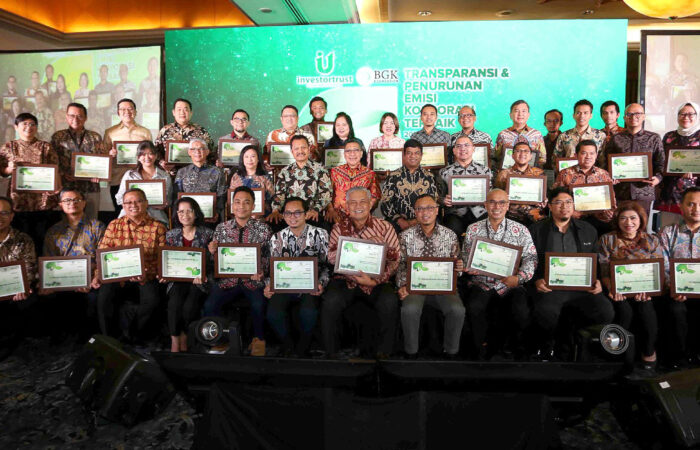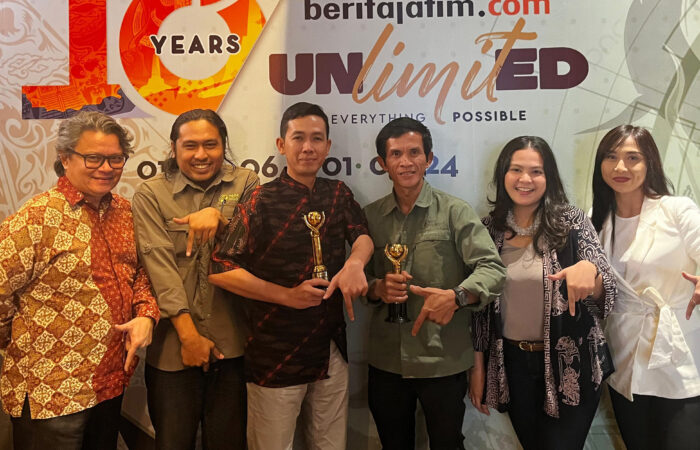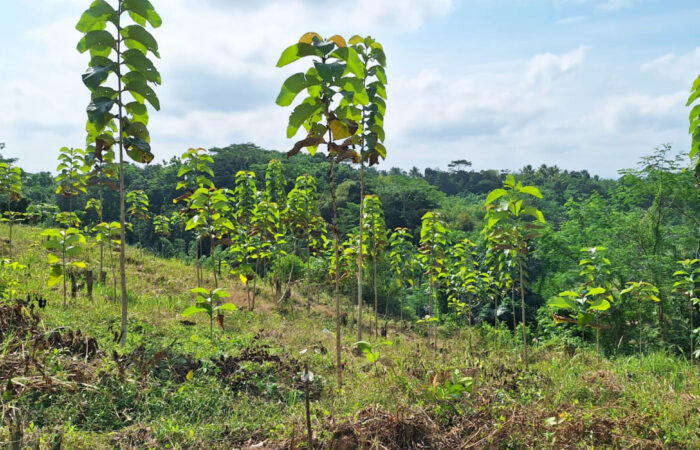Merdeka Group continues to increase the use of B30 biodiesel for operational vehicles and heavy mining equipment. The adoption of more environmentally friendly fuels, which began in 2020, is implemented throughout mining operations, including contractor operational activities, to reduce energy intensity.
This demonstrates Merdeka’s support for government programs, as outlined in the Minister of Energy and Mineral Resources Regulation Number 12 of 2015, which revises the third amendment of Minister of Energy and Mineral Resources Regulation Number 32 of 2008 regarding the Provision, Utilization, and Trade of Biofuel as an Alternative Fuel. All monitoring and evaluation of energy efficiency programs are regularly monitored by experienced external consultants.
Merdeka continuously strives to utilize renewable energy for our mining operations. In 2022, the Tujuh Bukit Gold Mine signed an agreement to purchase electricity from PLN sourced from renewable energy power plants.
We have also installed solar panels at several of our mining operation sites that are not connected to the power grid, such as surface water monitoring devices at compliance points, slope stability monitoring tools, and mining lighting fixtures, both at the Tujuh Bukit Gold Mine in Banyuwangi, East Java, and the Wetar Copper Mine in Wetar Island, Southwest Maluku. These sites have started installing 600 solar modules as the initial phase of the green energy power generation project. Throughout 2022, the Tujuh Bukit Gold Mine achieved energy savings of 2,657 kWh, equivalent to 9.5 gigajoules, through the use of solar panels.
Another energy-saving initiative at the Wetar Copper Mine involved replacing more fuel-efficient generators, resulting in a 10% reduction in diesel usage. In 2022, the energy consumption data for the Wetar Copper Mine was recalculated to exclude electricity usage since it was already accounted for in the utilization of B30 biodiesel, which generates electricity.
Table 1. Total Energy Consumption and Energy Intensity of Merdeka in 2022.
